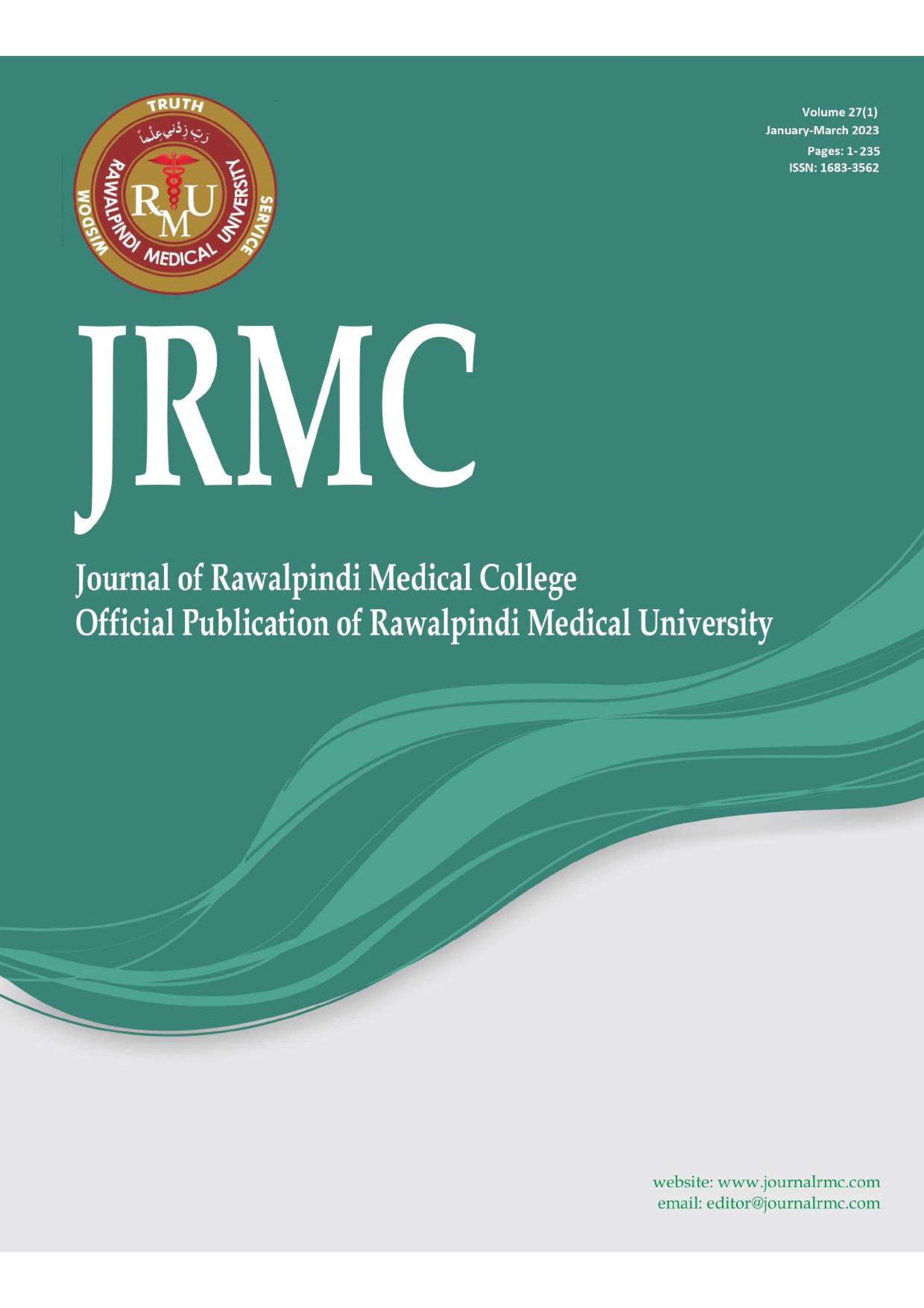Abstract
Background:
It is very common for coronary arteries to vary in their origin, course and area of distribution. The knowledge about these variations is unequivocally important for a cardiac surgeon and physician. However, the prevalence of such variations varies among different populations. The already available data on variations in the anatomy of coronary arteries is mostly based on studies conducted on the western population and quite a few studies report the coronary arterial patterns of Asian population. Between the two main coronary arteries, i.e. the right coronary artery (RCA) and left coronary arteries (LCA), variation in the branching pattern of RCA is more common than LCA. The present study investigated the branching pattern of RCA in the local population in Pakistan and hence will add to the existing data on inter- and intra-population frequencies of branching pattern of RCA among non-Europeans.
Methods:
It was an observational study of six months duration and conducted on dissection cadavers available in various medical colleges of Rawalpindi and Khyber Pakhtunkhwa. The branching pattern of RCA was studied by blunt dissection method.
Results:
Right marginal, conus, Sinuatrial (SA) nodal, atrioventricular (AV) nodal and posterior descending arteries (PDA) were arising from RCA in majority of cases. However, the branching pattern varied from one heart to another as reported in other studies carried out in developed countries. The frequencies of branching patterns of RCA varied from those already reported in literature.
Conclusions:
RCA manifest anatomical variations in branching pattern as reported in international literature and this variation is different in different populations of the world which indicates that postnatal development, along with differences based on geography and ethnicities might contribute to the modification of anatomical pattern of coronary arteries in humans.
References
Abdellah, A.A.A., Elsayed, A.S.A., Hassan, M.A. (2009) Khartoum Medical Journal 02 (1): 162 – 164.
Adachi, B. (1928) Das Arterien System der Japaner. Vol 1, p. 17. Verlag der Kaiserlich-Japanischen Universitat, Kenyusha Press, Kyoto.
Angelini, P., Velasco, J.A., Flam, S. (2002) Coronary anomalies: Incidence, pathophysiology and clinical relevance. Circulation 105:2449-54.
Baptista, C.A., DiDio, L.J. (1992) The relationship between the directions of myocardial bridges and of the branches of the coronary arteries in the human heart. Surg Radiol Anat. 14: 137-40.
Bergman, R.A., Afifi, A.K., Miyauchi, R. (1988) Illustrated encyclopaedia of human anatomic variation. http://www.anatomyatlases.org/AnatomicVariants/Cardiovascular/Text/Arteries/Aorta.shtml (accessed September, 2016).
Cademartiri, F., La Grutta, L., Malagò, R. et al. (2008) Prevalence of anatomical variants and coronary anomalies in 543 consecutive patients studied with 64-slice CT coronary angiography. Eur Radiol 18:781-9.
Cademartiri, F., Malagò, R., Grutta, L.L., et al. (2007) Coronary variants and anomalies: Methodology of visualisation with 64-slice CT and prevalence in 202 consecutive patients. Radiol Med 112:1117-31.
Christensen, K.N., Harris, S.R., Froemming, A.T., Brinjikji, W., Araoz, P., Asirvatham, S.J., Lachman, N. (2010) Anatomic assessment of the bifurcation of the left main coronary artery using multidetector computed tomography. Surg Radiol Anat 32(10):903-9.
Cielinski, G., Rapprich, B. and G. Kober. (1993) Coronary anomalies: incidence and importance. Clin. Cardiology 16:711-715.
Frescura, C., Basso, C., Thiene, G., Corrado, D., Pennelli, T., Angelini, A., Daliento, L. (1998) Anomalous origin of coronary arteries and risk of sudden death: a study based on an autopsy population of congenital heart disease. Hum. Pathol. 29: 689–695.
Garg, N., Tewari, S., Kapoor, A., Gupta, D.K., Sinha, N. (2000) Primary congenital anomalies of the coronary arteries: A coronary arteriographic study. Int J Cardiol. Jun 12; 74(1): 39-46.
Giesel, J. (2003) Folic acid and neural tube defects in pregnancy: a review. J Perinat Neonatal Nurs, 17: 268–79.
Gotzilius, M.A. (2008) Heart and mediastinum. In: Gray’s Anatomy, 40th edn. New York: Churchill Livingstone: 939–987.
Henneberg, M. (1992) Continuing human evolution: bodies, brains and the role of variability. Trans Roy Soc S Afr 48: 159–182.
Kaku, B., Shimizu, M., Yoshio, H., Ino, H., Mizuno, S., Kanaya, H., et al. (1996) Clinical features of prognosis of Japanese patients with anomalous origin of the coronary artery. Jpn. Circ. J. 60:731-741.
Kalpana, R. (2003) A Study on principal branches of coronary artery in humans. J Anat. Soc India, 52(2):137-40.
Kardos, A., Babai, L., Rudas, L., Gaál, T., Horváth, T., Tálosi, L., Tóth, K., Sárváry, L., Szász, K. (1997) Epidemiology of congenital coronary artery anomalies: a coronary arteriography study on a Central European population. Catheterization and Cardiovascular Diagnosis, 42: 270–275.
Ortale, J.R., Keiralla, L.C., Sacilotto, L. (2004) The posterior ventricular branches of the coronary arteries in the human heart. Arq Bras Cardiol 82:468-72.
Ullah, Q.W., Waheed, N., Saleem, S., Qamar, K. (2015) Variation in the number and location of coronary ostia - a cadaveric study. Int. J. Pathol 2015; 13(3): 95-100
Romanes, G.J. (1989) Cunningham’s Manual of Practical Anatomy, 15th edn. Vol.2: Thorax and Abdomen. New York: Oxford University Press: 1-82.
Schlesinger, M. J. (1940) Variations in the anatomic pattern of coronary vessels. Am. A. Advancement Sc. 13:61.
Schlesinger, M.J., Zoll, P.M. and S. Wessler. (1949) The conus artery; a third coronary artery. Am. Heart. J. 38:823-836.
Sinnatamby, C.S. (2011) editor. Middle mediastinum and heart. In: Last’s Anatomy Regional and Applied.12th ed. New York: Churchill Livingstone; p.321-22.
Topaz, O., De Marchena, E.J., Perin, E. et al. (1992) Anomalous coronary arteries: angiographic findings in 80 patients. Int J Cardiol 34:129-38.
Vilallonga, J.R. (2003) Anatomical variations of the coronary arteries: I. The most frequent variations. Eur J Anat 7:29-41.
Yamanaka, O., R.E. Hobbs. (1990) Coronary artery anomalies in 126,595 patients undergoing coronary arteriography. Cathet. Cardiovasc. Diagn. 21:28-40.
Zimmermann, E., Schnapauff, D., Dewey, M. (2008) Cardiac and coronary anatomy in computed tomography Semin Ultrasound CT MR. 29(3):176-81 PMID: 18564541

This work is licensed under a Creative Commons Attribution-ShareAlike 4.0 International License.
Copyright (c) 2023 Qazi Waheedullah, Farah Deeba, Sadia Shaukat, Samina Zahir, Shazia Iftikhar, Zainab Rehman





